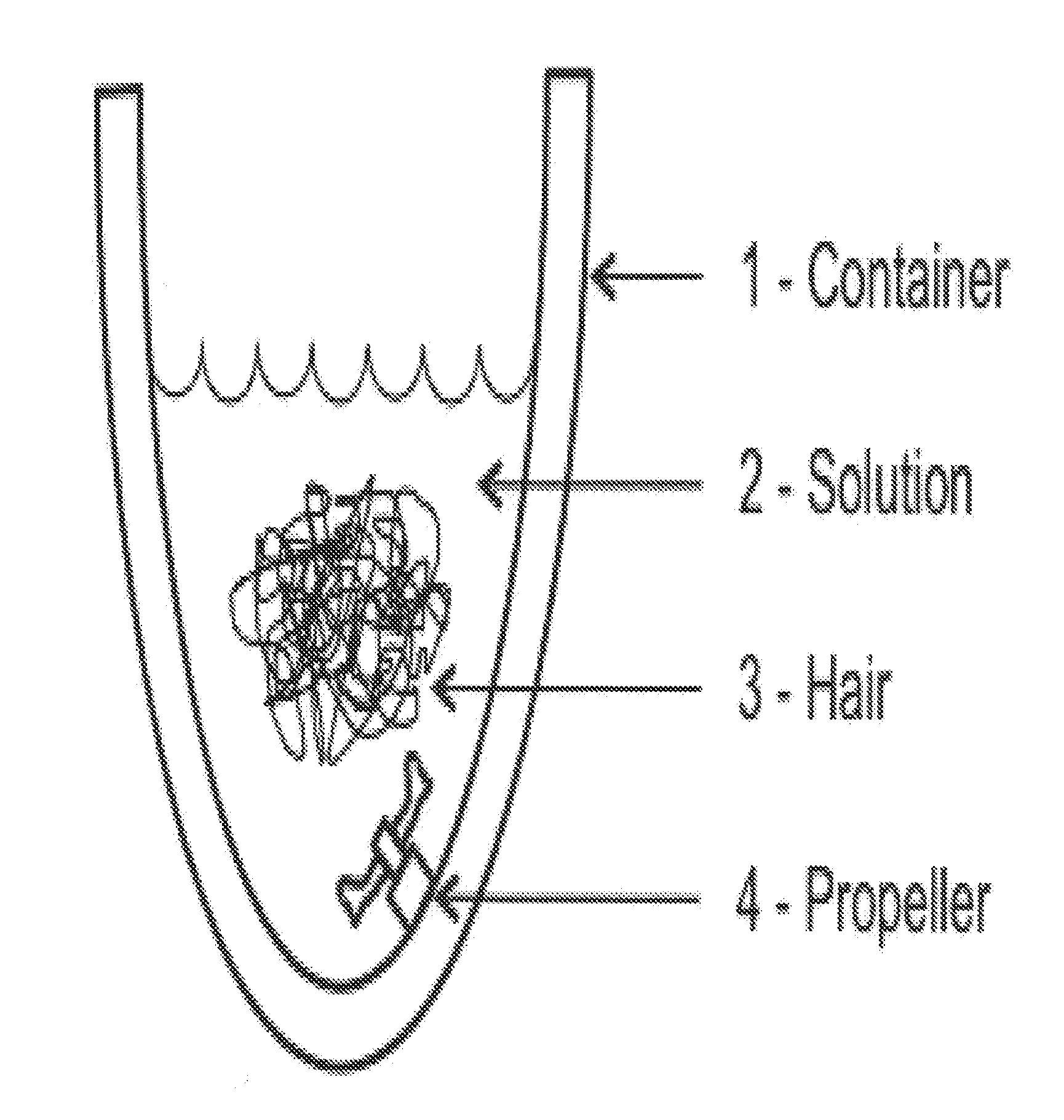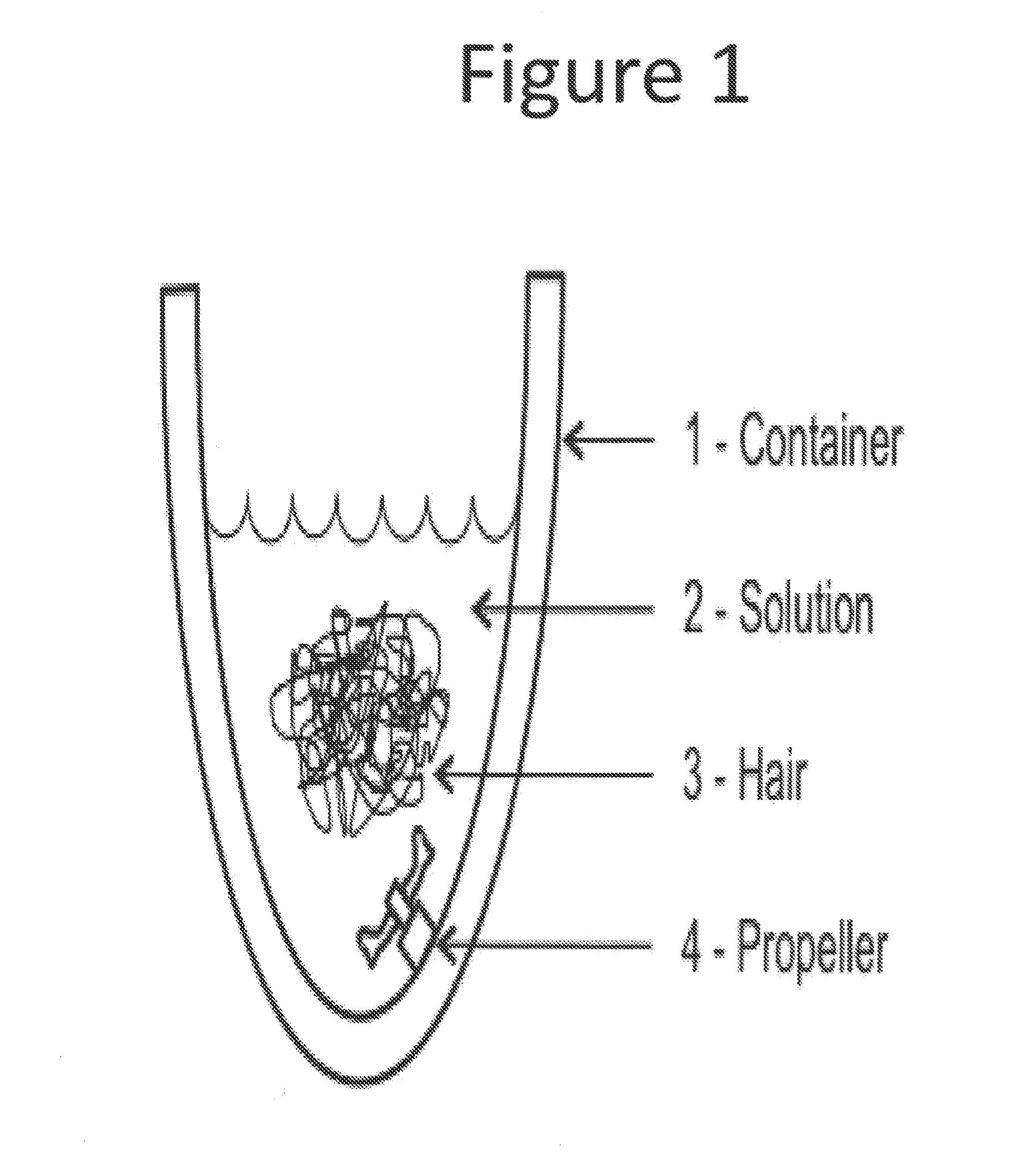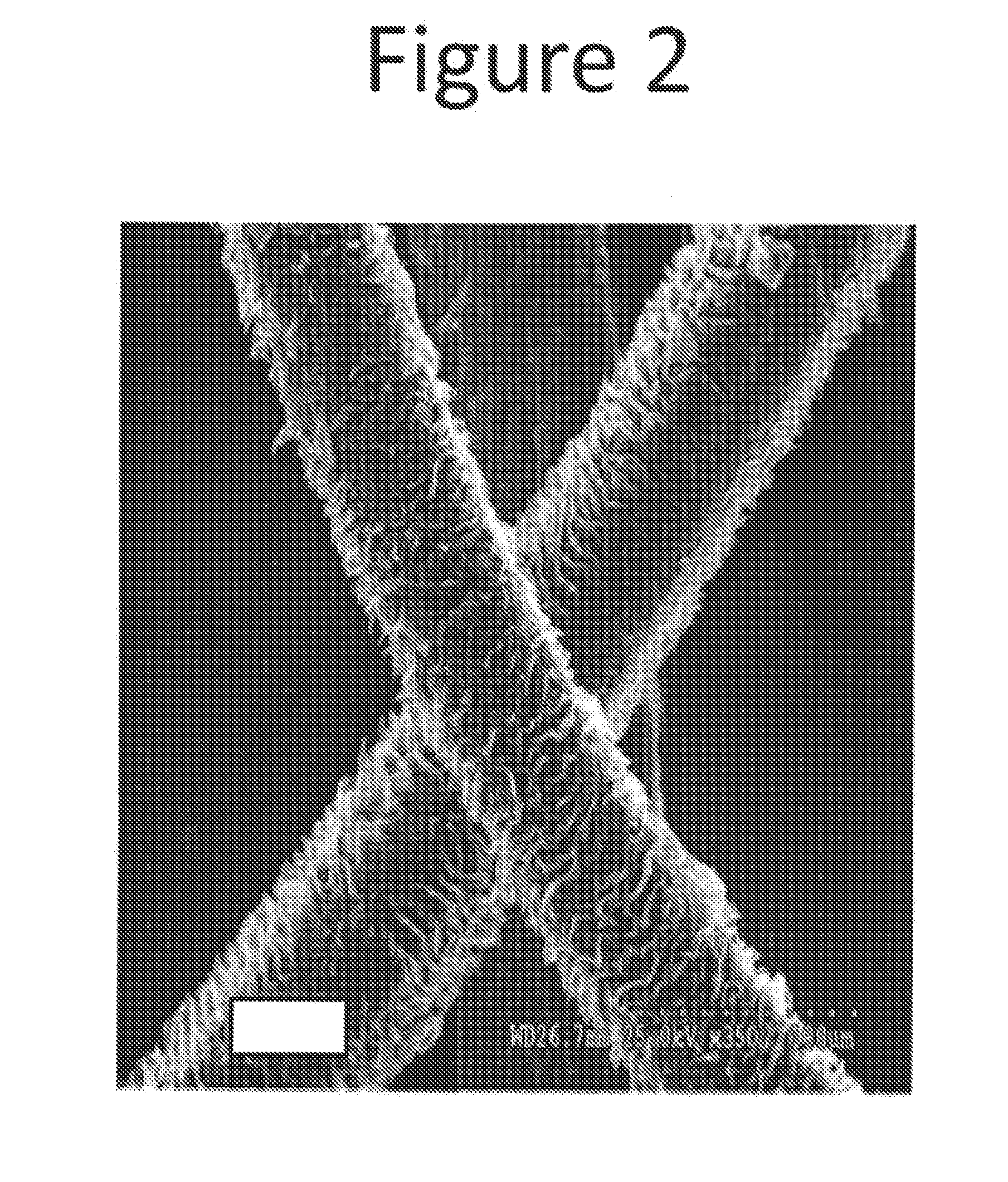Methods for extracting keratin proteins
a technology of keratin protein and extraction method, which is applied in the direction of peptide/protein ingredients, peptide sources, peptides, etc., to achieve the effect of minimizing the degradation of said keratin protein
- Summary
- Abstract
- Description
- Claims
- Application Information
AI Technical Summary
Benefits of technology
Problems solved by technology
Method used
Image
Examples
example 1
6.1 Example 1
Keratose Extraction Methods (Oxidative Extraction)
[0058]Untreated Chinese hair was used in the extraction method. The hair was end-cut to lengths of ¼, ½, ¾ and 1 inch segments and cleaned by washing in a warm water solution.
[0059]Step 1: The hair was added to a mixing tank. The tank was a 316L stainless steel vessel that contained a propeller for mechanical agitation (see FIG. 1). The oxidant was added to the vessel. The oxidant used was a 2% solution of paracetic acid (PAA) at a 25:1 weight-to-weight ratio. The mixture was mechanically mixed for a period of 12 hours at 37° C. The mechanical mixing resulted in complete oxidation of the hair shafts (see FIG. 2).
[0060]Step 2: The residual solution containing the oxidant was drained, neutralized and discarded.
[0061]Step 3: The oxidized hair was collected and rinsed with water until PAA test strips revealed no residual oxidant in the solution.
[0062]Step 4: A base was then added to the drained hair in a ratio of 25:1. In th...
example 2
6.2 Example 2
Kerateine Extraction Methods (Reductive Extraction)
[0073]Kerateine Extraction Methods (Reductive Extraction).
[0074]Untreated Chinese hair was end-cut to lengths of ¼, ½, ¾ and 1 inch segments and washed in a warm water solution.
[0075]Step 1: The hair was added to a 316L stainless steel vessel that contained a propeller for mechanical agitation (see FIG. 1). The reductant was added to the vessel. The reductant was a 0.5M solution of a thioglycolic acid (TGA) at a ratio of 25:1. The mixture was mechanically mixed for a period of 15 hours at 37° C. The mechanical mixing can be beneficial to improve the extent to which reduction occurs in the hair shafts.
[0076]Step 2: The solution containing reductant and extracted keratin proteins was collected and stored in a separate container at 4° C. The remaining hair was retained by sieving through a steel mesh with a pore size of 400 microns. The mechanical agitation applied during the straining process helps to collect as much solu...
PUM
| Property | Measurement | Unit |
|---|---|---|
| Pressure | aaaaa | aaaaa |
| Pressure | aaaaa | aaaaa |
| Fraction | aaaaa | aaaaa |
Abstract
Description
Claims
Application Information
 Login to View More
Login to View More - R&D
- Intellectual Property
- Life Sciences
- Materials
- Tech Scout
- Unparalleled Data Quality
- Higher Quality Content
- 60% Fewer Hallucinations
Browse by: Latest US Patents, China's latest patents, Technical Efficacy Thesaurus, Application Domain, Technology Topic, Popular Technical Reports.
© 2025 PatSnap. All rights reserved.Legal|Privacy policy|Modern Slavery Act Transparency Statement|Sitemap|About US| Contact US: help@patsnap.com



